August-December 2023 PODs
Bill’s “Pictures of the Day”
from the last part of 2023
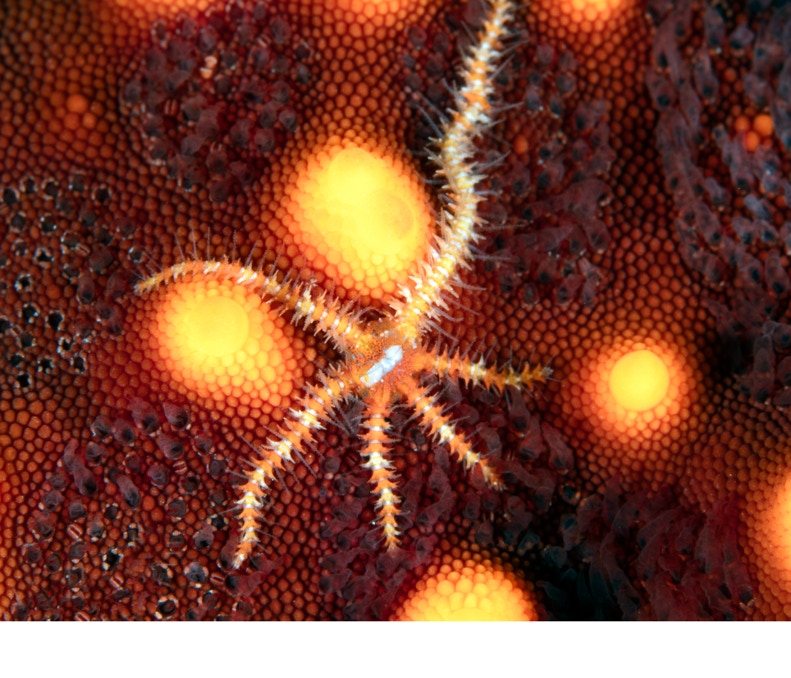
Here is a nice little brittle star (less than 1/2 inch across, sitting on the tips of a much larger sea star from our recent trip to the Sea of Cortez. Brittle stars are amazing in that each arm is more or less independent with a kind of neural ring in the center. One species (not this one) actually has vision that can see images, not just dark and light. A group from Oxford, Leibniz, Lund and Georgia Tech did some very neat experiments and showed that during the day (but not at night) they could find shelter by seeing images. (as usual if you want a copy of the paper let me know). In any case, I think he/she is kinda cute.
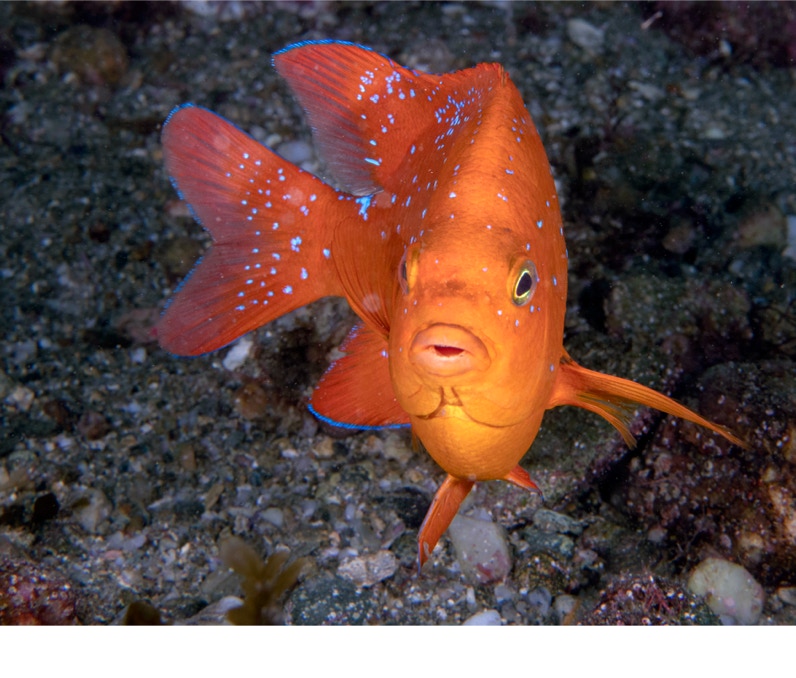
We went diving with friends (Ana, Dana, Jeff, Kelly) yesterday on our favorite boat the Giant Stride, over to Catalina Island. Not our typical "find the teeny things" dive but conditions were enormously good, calm, mostly clear warmish water. I spent a bunch of time with some juvenile Garibaldi. The juveniles have lots of blue on them. Since Garibaldi are types of Damsel Fish, they are born mean and love to chase after everyone and anyone (including divers). BUT they won't pick on the juveniles, so juveniles can swim through another fish's domain with no worries. On the other hand, the Cabrillo Aquarium has noticed that the juveniles "learn" to be mean by fighting with other juveniles.
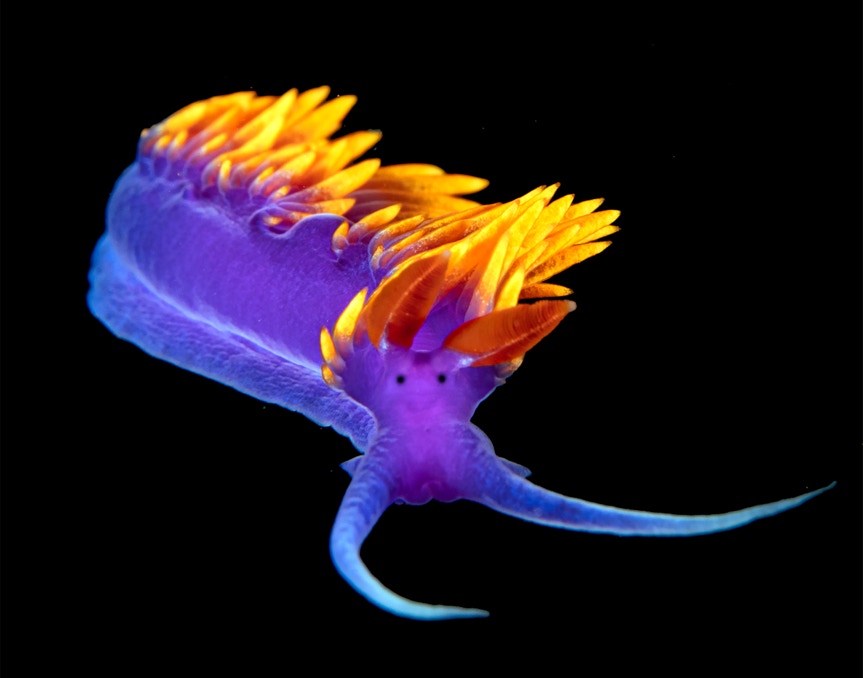
Yet another (I still love them) Spanish shawl on the black stage. From Catalina with friends yesterday.
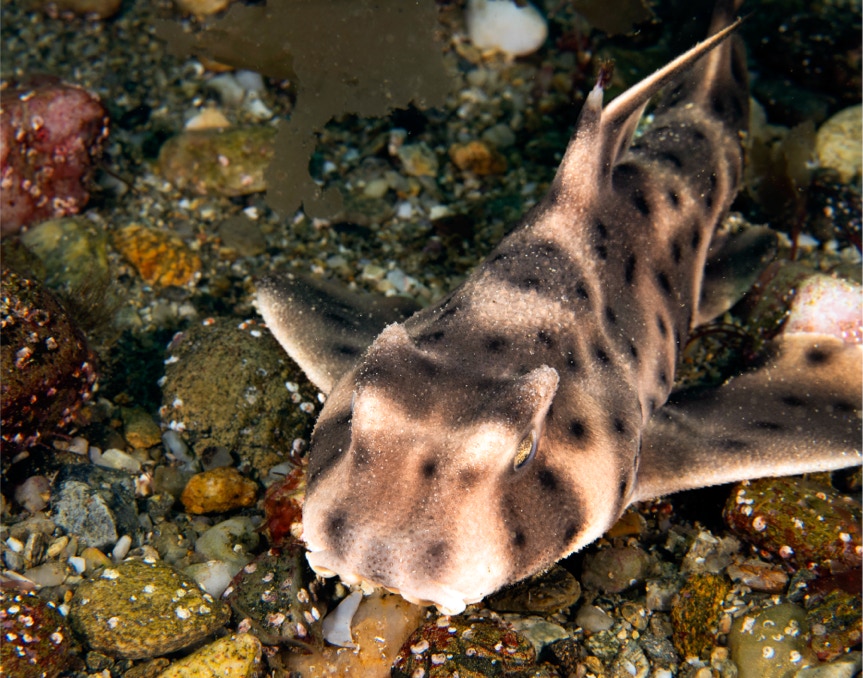
Aren't you afraid of sharks? Probably the most common question we get (along with how deep do you dive?). Well not of this guy. Here is a nice little (maybe 8 inches long) horn shark from our recent trip to Catalina with friends on the Giant Stride.
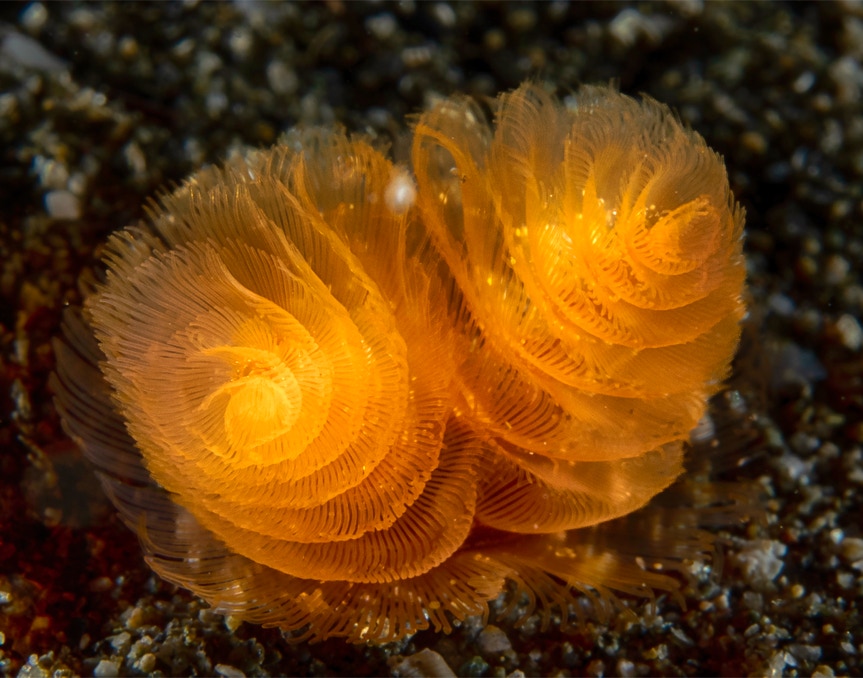
Here is a nice little sand dweller the Phoronid. From Catalina on the Giant Stride.
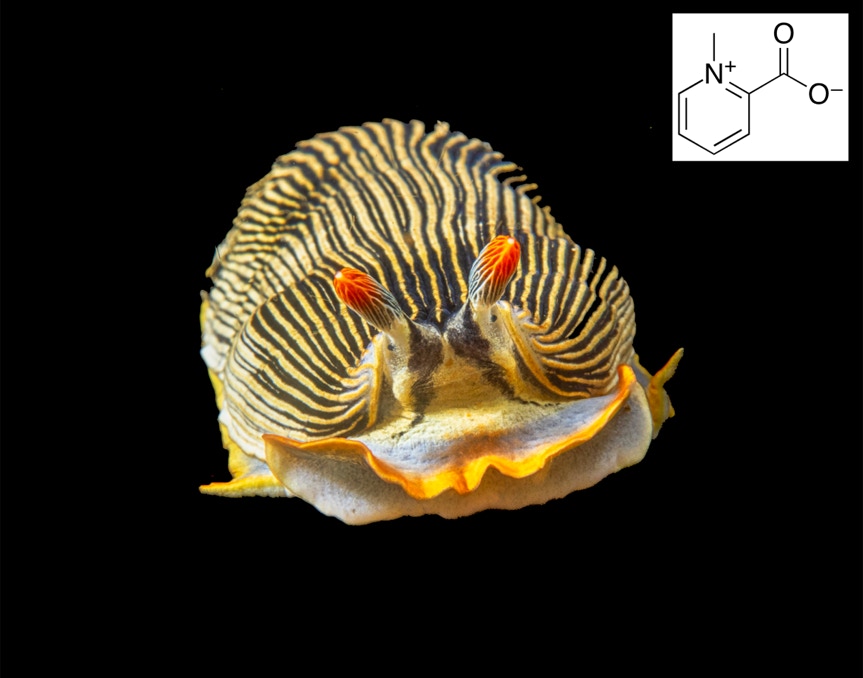
Here is a nice little Armina (sp?) from the Philippines. Sitting on the black telescope felt stage. These guys eat sea pens and from the pens they sequester some interesting molecules (some partial synthesis by the Armina) particularly homarine (see inset) which is a potent anti-inflammatory and has some activity against certain cancer types.
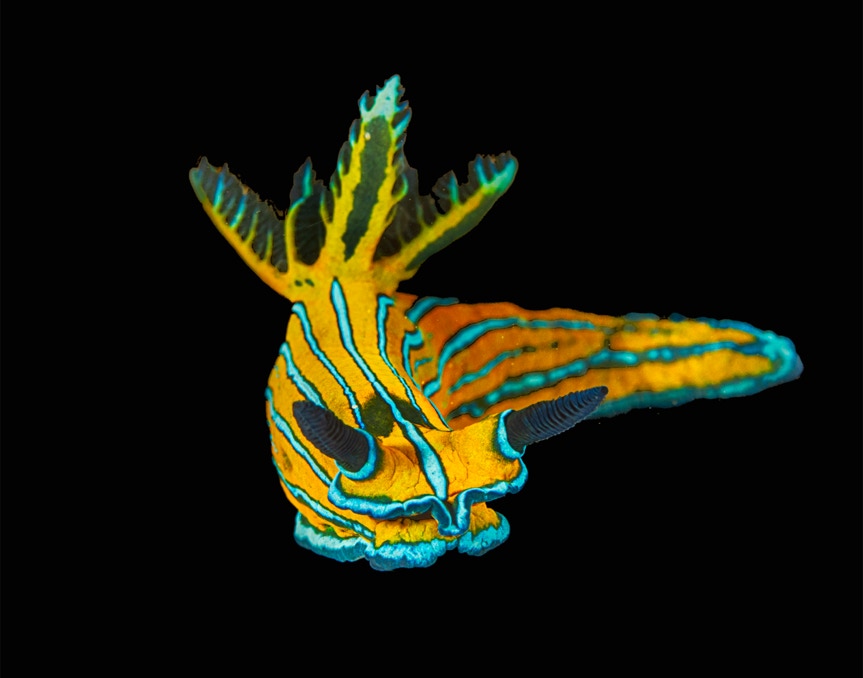
Here is a nice little roboastra (I think) from our recent trip to the Sea of Cortez. These guys have a series of molecules called tambjamines (this guy looks like a tambja) (chemists are not good at naming things) that have antimalarial properties.
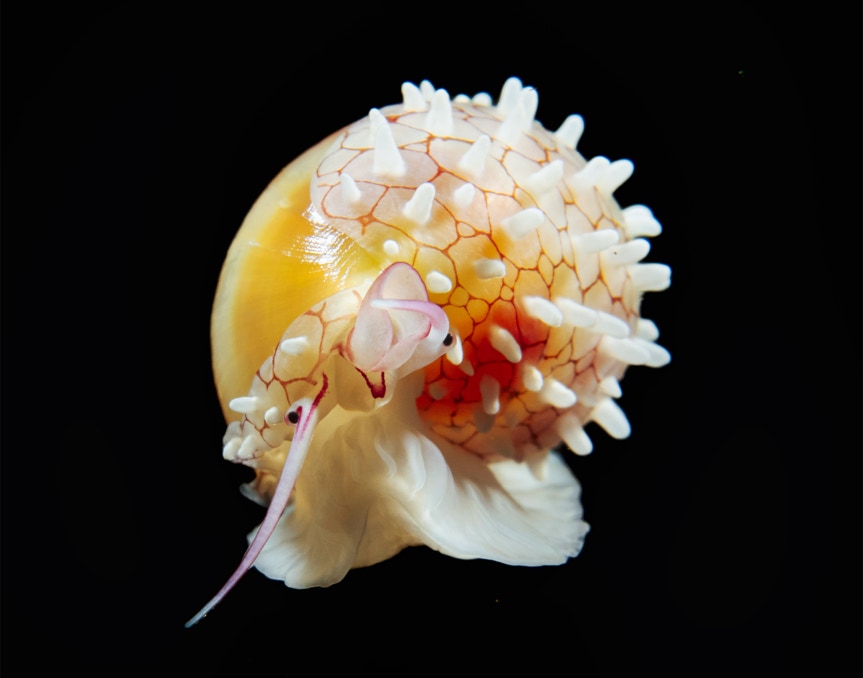
Here is a nice little soft coral cowry looking around the telescope felt stage. This is from Anilao.
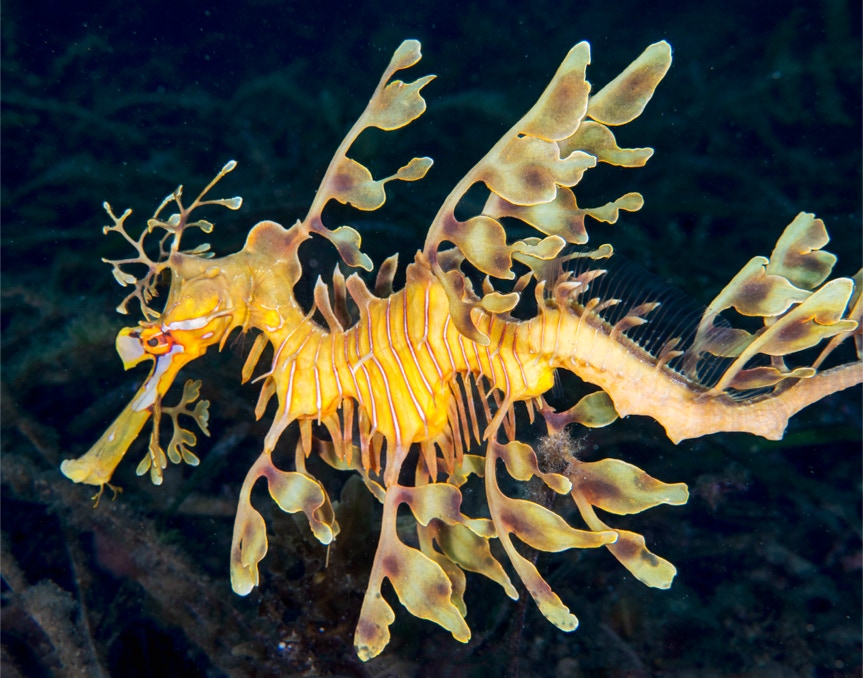
Here is a nice Leafy Sea Dragon from our trip to South Australia.
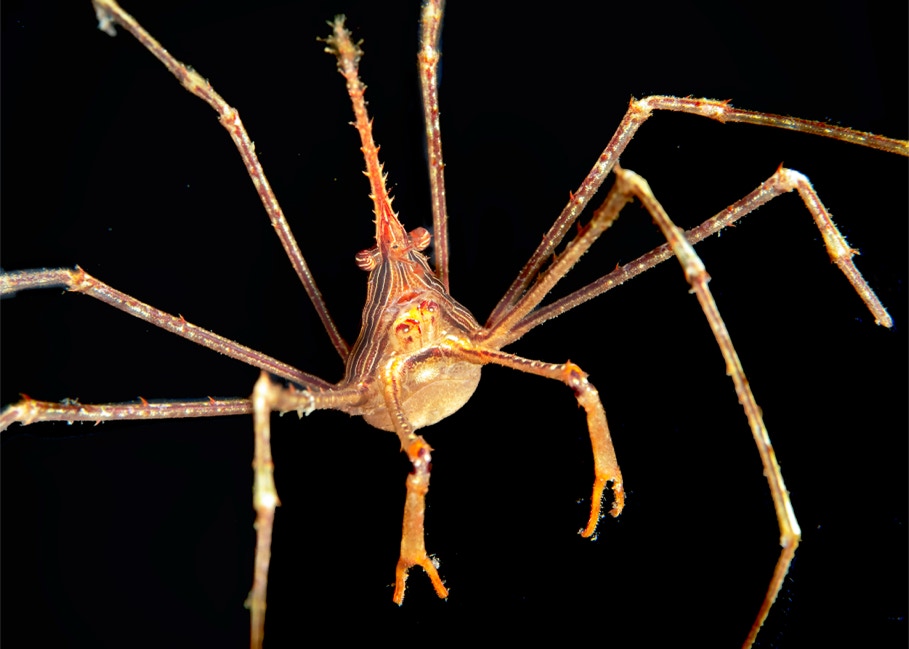
Here is a nice little arrow crab from the sea of Cortez. These guys don't have the purple claws that many of the Caribbean guys do. I wish I had striped eyeballs.
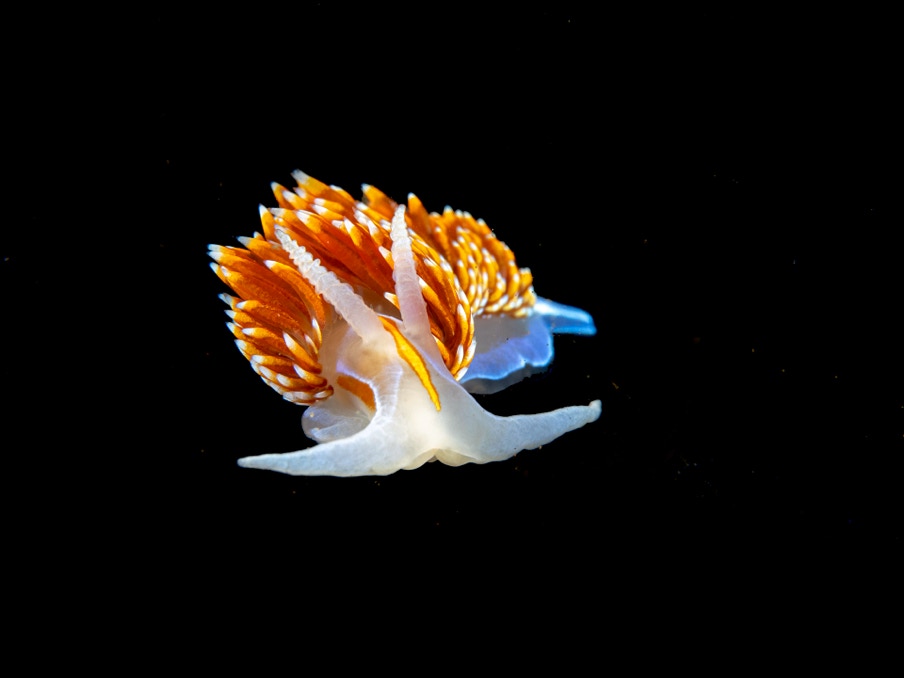
We went diving yesterday with friends on the Giant Stride. Great conditions (good vis) but quite a bit of surge. In any case here is a nice little Hermissenda sitting on the black telescope felt stage.
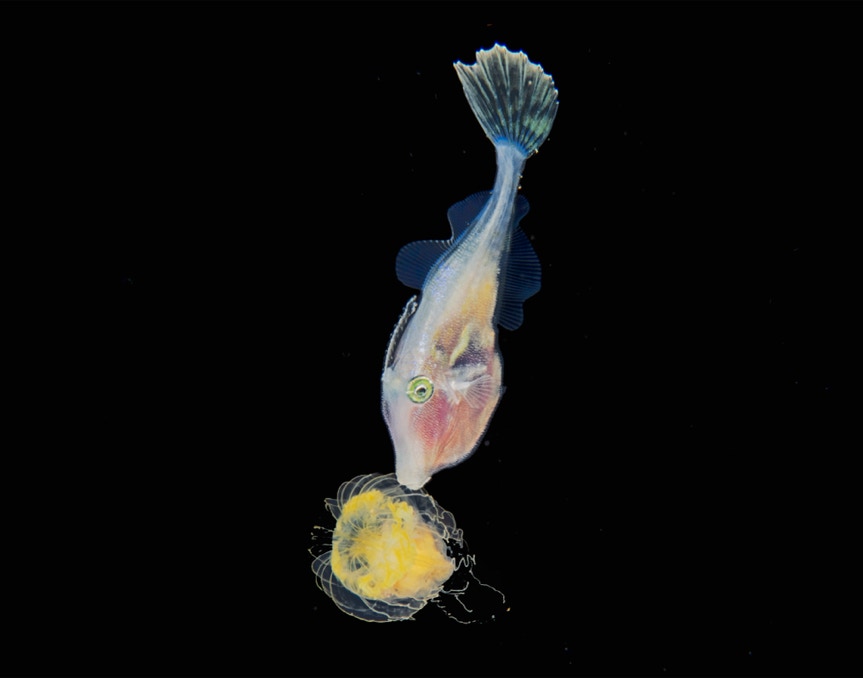
From a blackwater dive in Bali.
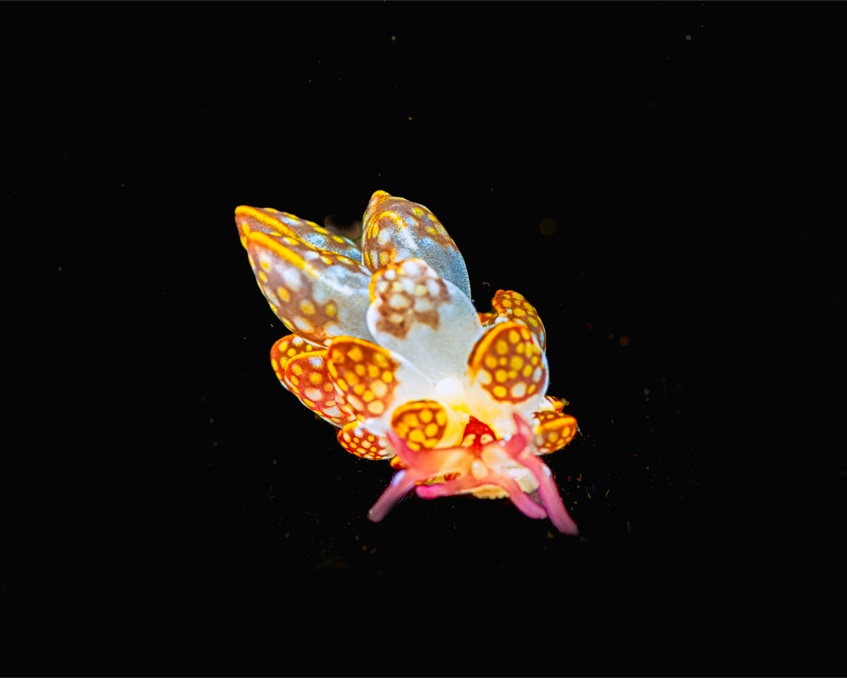
Here is a nice little Cyerce kikutarobabai from Bali that we saw yesterday. He is sitting on the telescope felt stage.
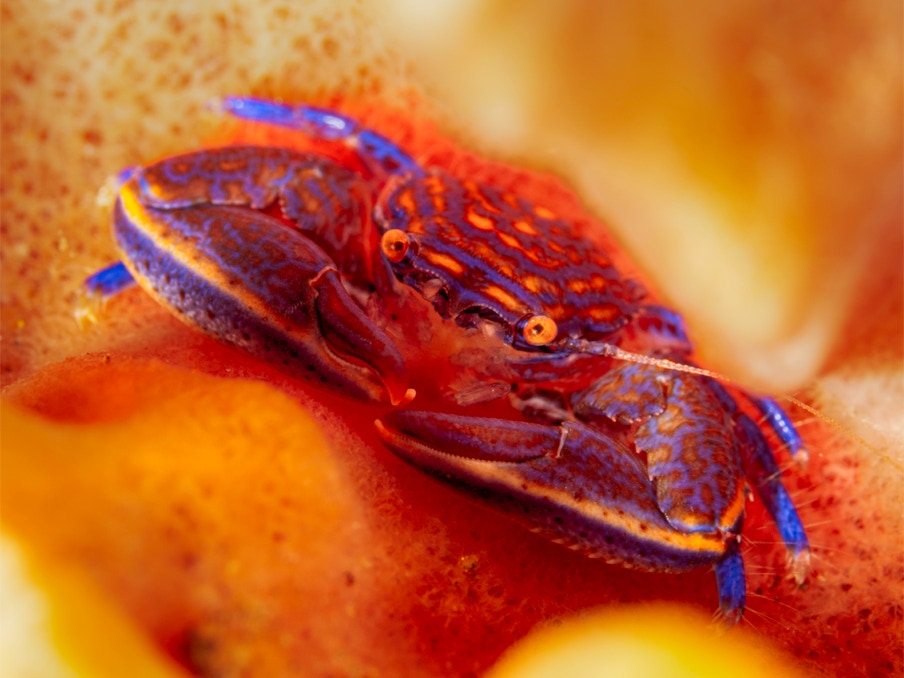
Happy Halloween! Here is a nice little crab that was sitting in a big barrel sponge. I put the strobe to illuminate through one of the ribs of the sponge. Enjoy and don't eat too much candy.
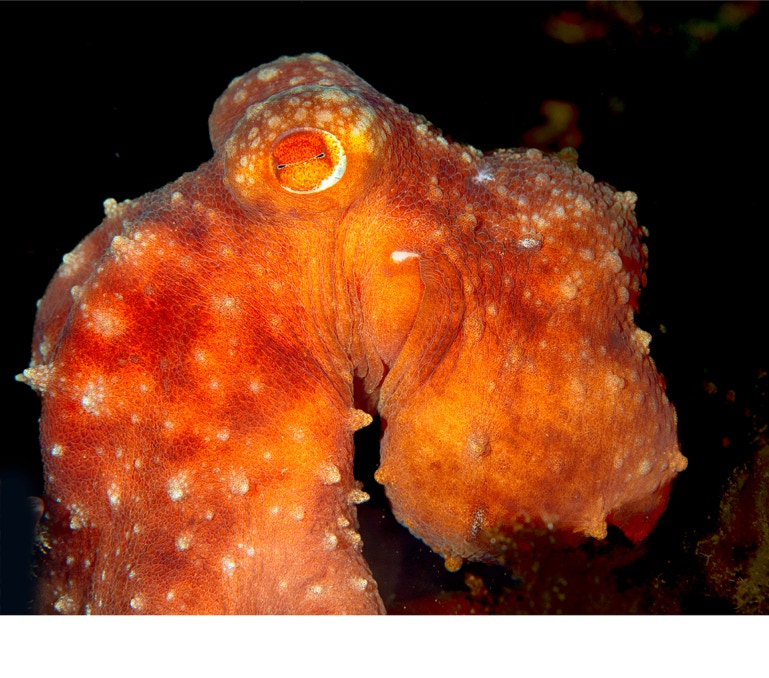
Here is a nice little starry night octopus from Bali last night, shot at the wonderful Villa Markisa. Several years ago, a bunch of scientists in Japan studied these guys and conclude “Environmental enrichment of octopuses in aquariums allows them to demonstrate their unique, complex behavior for an audience. In addition to this, researchers have begun to think about octopuses and other cephalopods in terms of animal welfare. Further study on environmental enrichment for octopus with regard to physiological and biochemical effects is necessary.” (Moltschaniwskyj et al. 2007) Better than having them for lunch I guess.
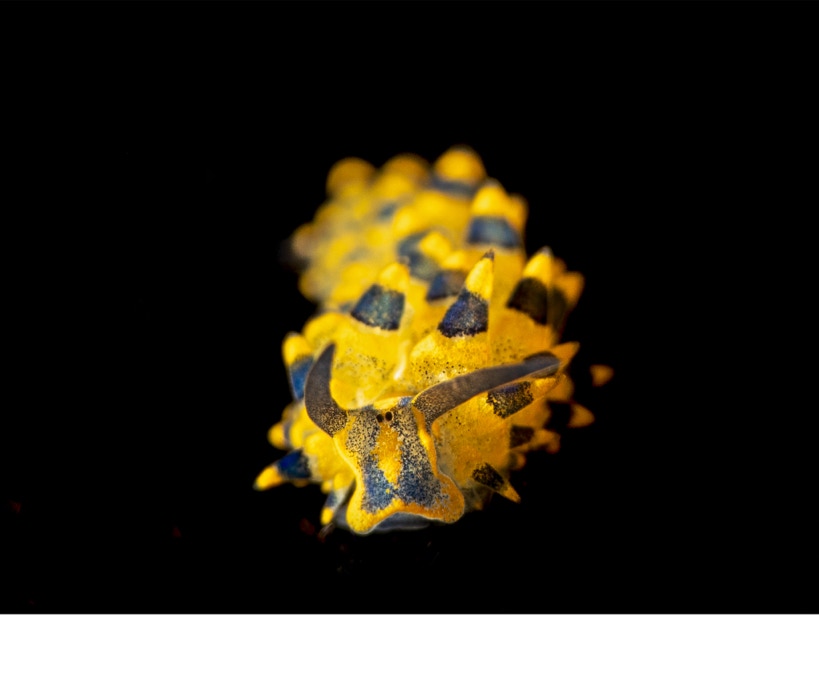
Here is a nice little Stiliger ornatus (some think that it is a Costasiella) from a few days ago in Bali. The Stiliger has some defense against being eaten: “In both Stiliger and Lobiger stimulation of the animal causes release of a white fluid from some of these glands (see above for Stiliger, also Gonor, 1961, and Kay, 1964 for Labiger). In Berthelinia, the hypobranchial gland is of defensive importance. When the animal is violently irritated, it exudes a viscous white fluid from the hypobranchial gland (Burn, 1960; Edmunds, 1963; Kay, 1964). Some of the gland cells in the hypobranchial gland contain mucus, but others are responsible for the white threads which disperse gradually in water.” When I get violently irritated, I go have a glass of wine.
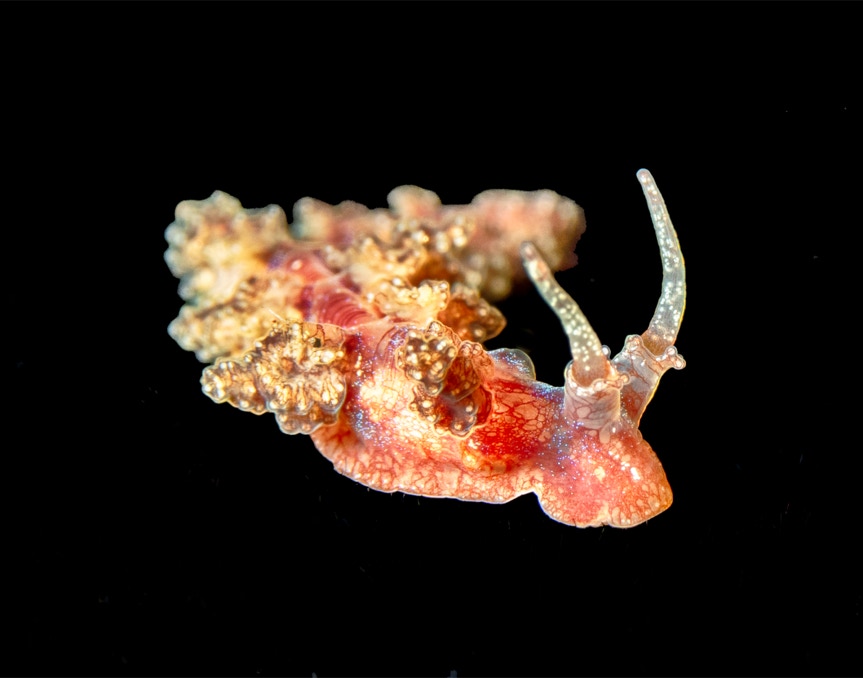
Here is a nice little Doto (SP6 in the latest Gosliner book) sitting on the black telescope felt stage. This was shot in Bali (Villa Markisa) with our friends.
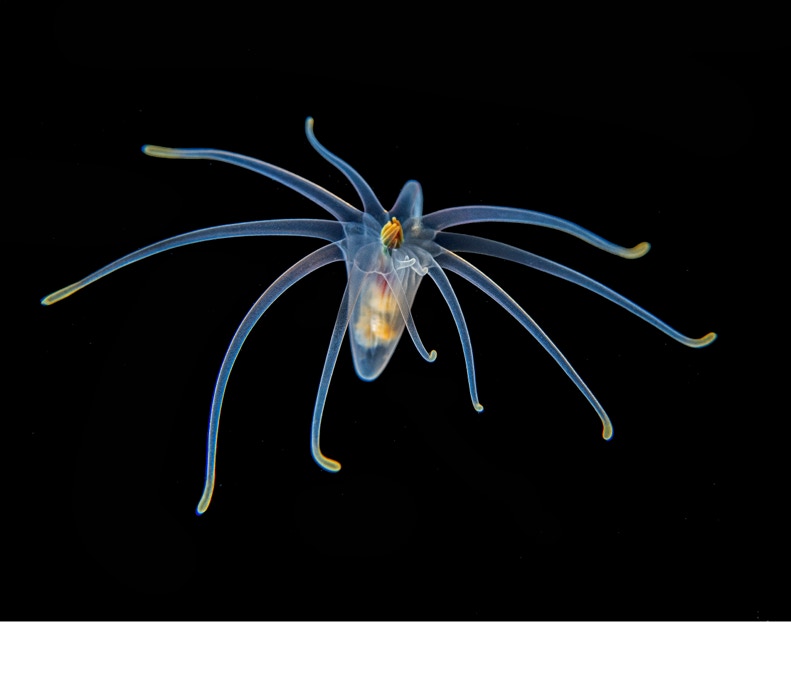
Here is a nice little tube dwelling anemone larva. We saw this on our first black water dive in Bali a few weeks ago. Tube dwelling anemones are demons. In a recent paper a group at U Kansas showed that these guys have 525 specific genes that are used to make protein based venom including neurotoxins, hemostatic toxins, protease inhibitors and a new one to me at least, a Waprin which is a toxin that is used to kill bacteria that might infect their venom glands. I guess that makes sense; if your eating or safety depends on making venom then you want to protect your venom maker. In any case, enjoy and ping me if you want a copy of the paper.
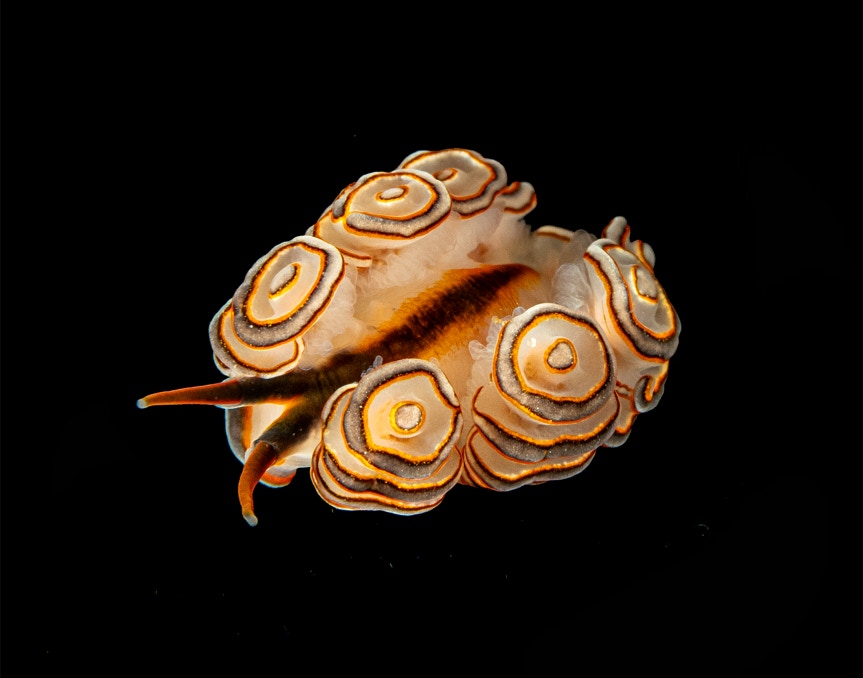
Everyone loves donuts. Here is a nice little donut doto nudibranch (Doto greenamyeri) which is one of most unusual Doto species, nothing looks like it at all. This from Bali with friends at Villa Markisa.
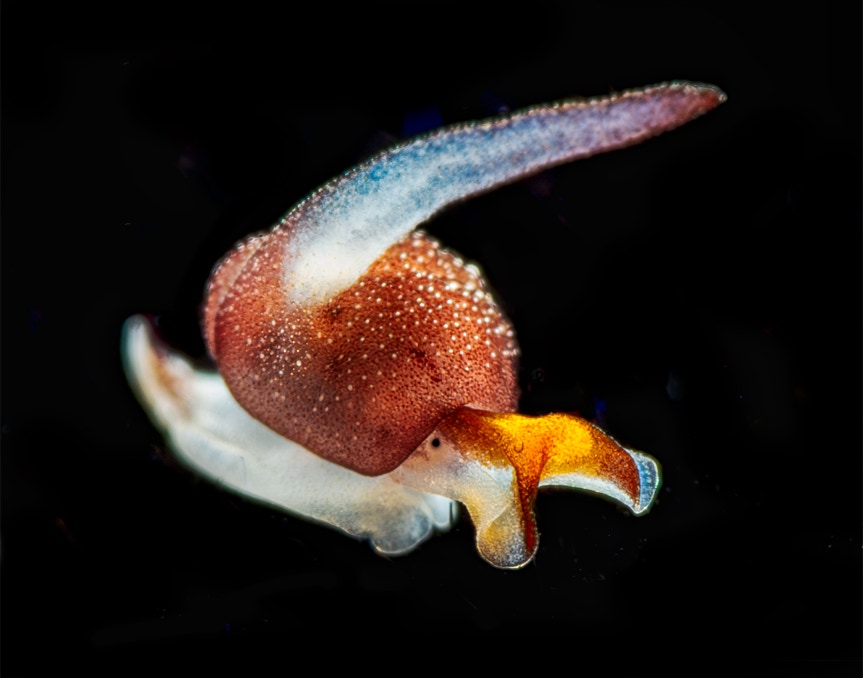
Here is a nice little (and I mean little) Colpodaspis sp2 (latest Gosliner book) from Bali. It is about 2 mm long or a bit longer.
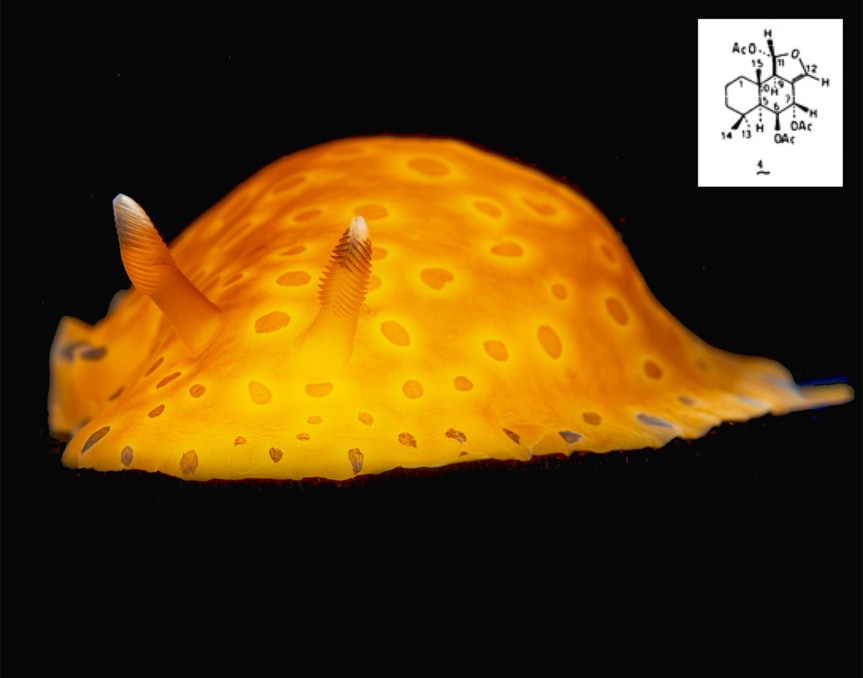
Here is a nice little Dendrodoris guttata from Bali on our last trip. Nudibranchs have a whole host of chemical defense tools and the question always arises "did he just eat something and steal its poison or did he make it himself?" In the case of Dendrodoris species, they are good chemists, making complex molecules (inset) relatively quickly and at ocean temperature, no flasks or condensers required. Here one is sitting on the black telescope stage.
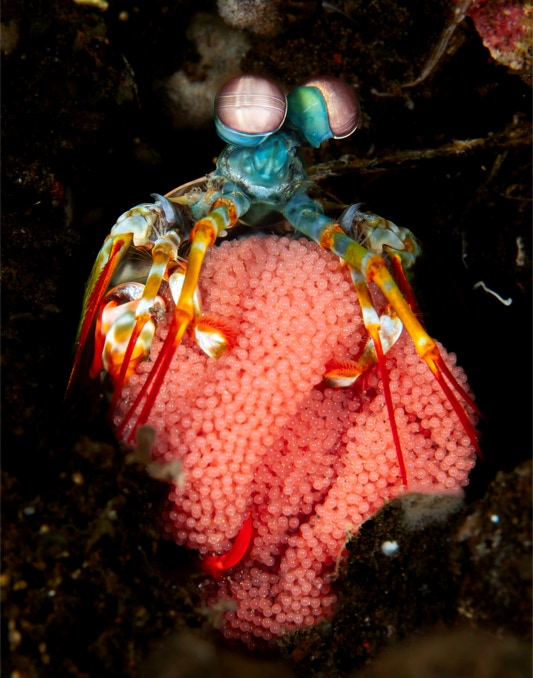
Here is something we all used to shoot (and I still do) a mantis shrimp with her eggs. If you look closely you can see what looks like a pair of eyes in each egg, but might just be a reflection from the strobe although they look too close together for that.






















© 2020-2026 Nannette and Bill Van Antwerp